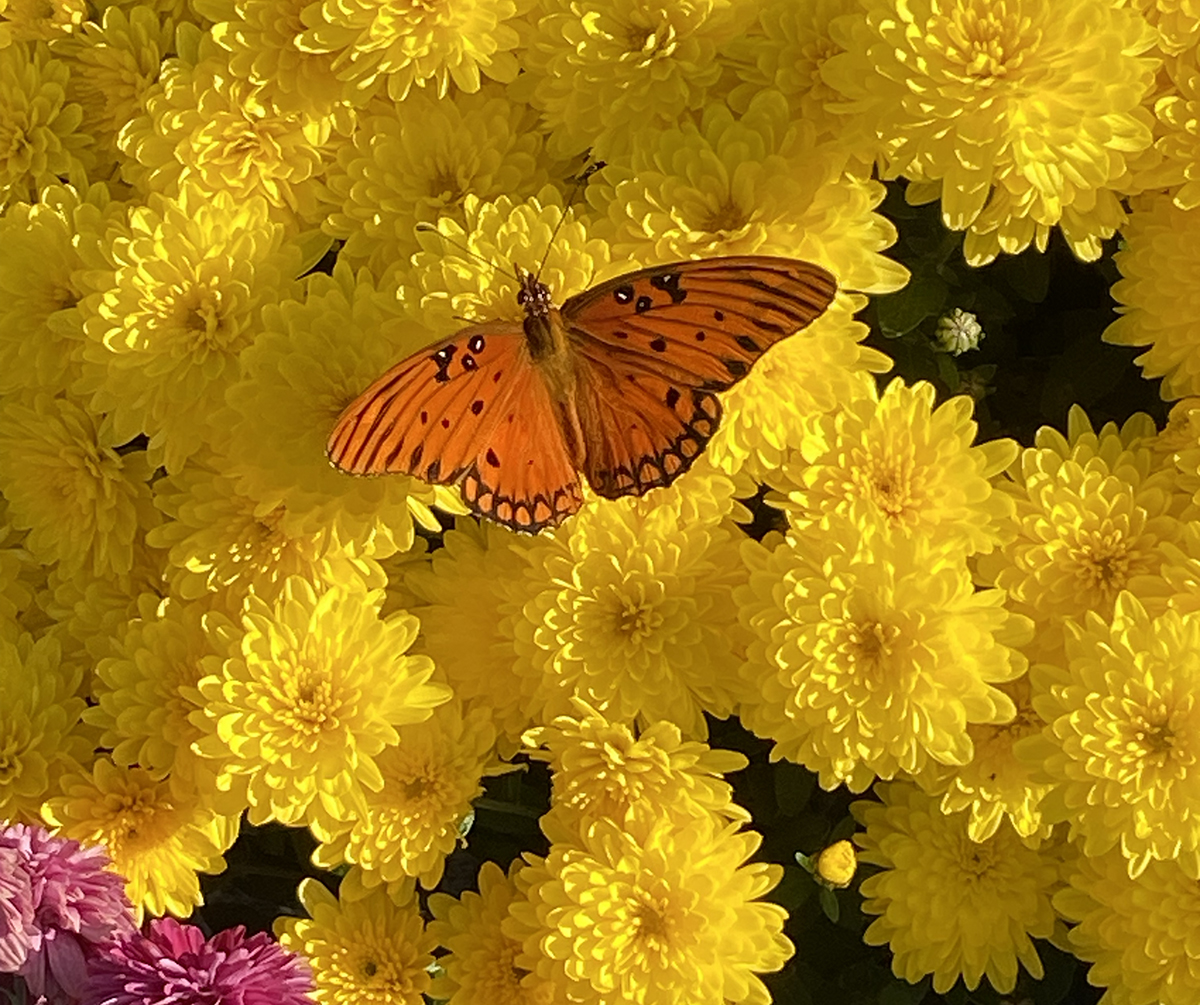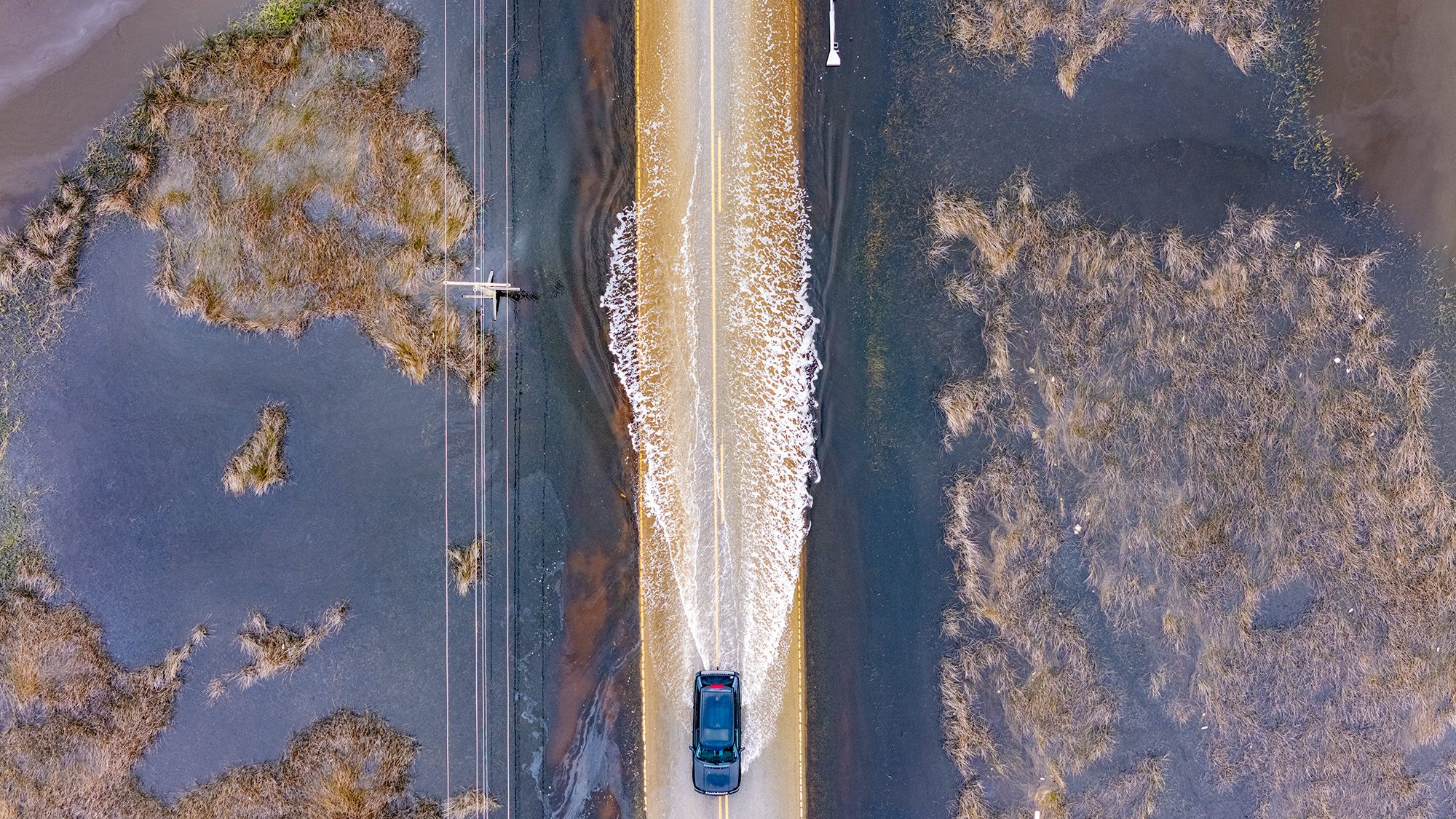On occasion, I will receive reports of unusual animals making a rare appearance along our coastal barrier islands.
I usually don’t get too excited because the animal is often not what someone thinks it is or by the time I get to where it is located the creature has vanished. However, on a recent balmy evening I received an email from a reliable source reporting that a bird rare to North Carolina was within a mile of my house. Just across Bogue Inlet, from the point of Bogue Banks, several park ranger friends of mine had sighted a roseate spoonbill stalking the marshes of Bear Island.
Supporter Spotlight
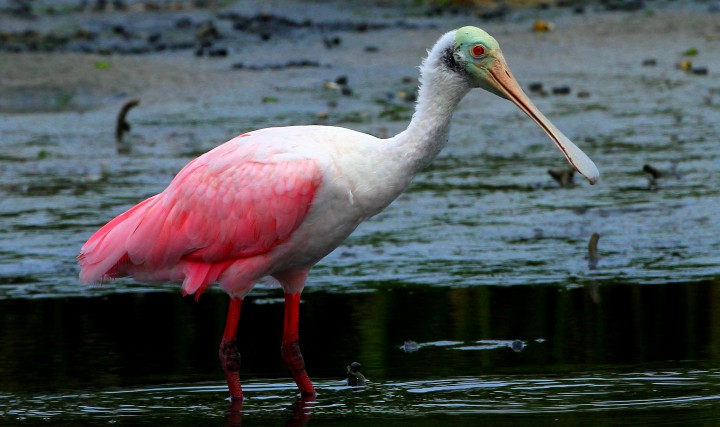
Even with the cloudy skies, it was a busy day at the park for a Monday, with sunbathers, swimmers and beachcombers scattered along the strand. Heading east, I busied myself looking for sea shells along the wrack line even though the speed of the ATV made the shells appear as one long blurry line. The next day, I was gliding on the state park ferry over waters darkened by overcast skies in hopes of locating this wayward visitor. Ranger Sarah Kendrick joined me on the ferry and we were met at the dock by ranger Renee Evans. The rangers presented me with the kind offer to ride along with them in an all-terrain vehicle (ATV) to the area of the day before’s sighting. The ATV easily pulled through the loose powdery sand of the dune line as we made our way onto the wide, flat, low tide beach.
Ranger Evans maneuvered the ATV around the eastern point of Bear Island steering clear of the closed posted sections of the sand spit that are reserved for the colonial shore birds that had scratched out well-camouflaged nests. Least terns were busy overhead returning to the colony with fish for the newly hatched hungry chicks. When the vehicle stopped, we were staring directly at a low tidal flat at the edge of the Spartina marsh.
“This is where I saw it,” Evans said. The tidal flat was fed by a shallow tidal creek that cut through the marsh and became very narrow as it fell away in the opposite direction. The tide was still dropping, revealing numerous bowl-like depressions that trapped plenty of fish, shrimp and small blue crabs within. They were natural fish bowls.
A few great and snowy egrets were out looking for a meal, but it appeared that the spoonbill was not going to present an easy sighting. After waiting for a bit, we decided to hike out and around the marsh area to get above the tidal creek. As we hiked along, there was a noisy protest from a number of adult oyster catchers, willets and Wilson’s plovers. Since the area was tidal, it was unlikely that a nest was nearby. Most likely the parents had ushered their chicks into the shelter of the cooler marsh grass to avoid the heat of the day.
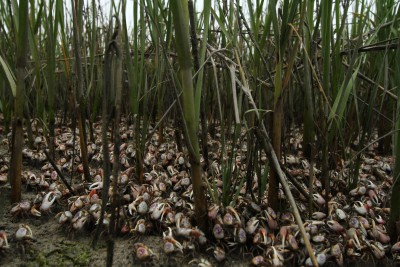
We decided to split up to increase our chance of finding the spoonbill. The rangers would hop back into the ATV to check another marsh area and I would continue walking a big loop around the entire marsh at the eastern point. Trudging along, the greenhead biting flies would at times torment me and the occasional oyster catcher would do a fly-by to indicate its displeasure with my presence with a fussy distress call. I would frequently stop to scan the marsh during this game of hide-and seek-to no avail.From this location we were able to walk a number of tidal creek mud flats that spilled out into Bogue Inlet. This is perfect habitat for the spoonbill looking for an easy “fish in a barrel” meal. As we meandered through the marsh, an eerie army of hundreds of thousands of fiddler crabs parted before us. A sharp clicking sound filled the air when their legs and shells collided as they climbed over each other racing ahead of our foot falls. In one of the tidal pools, a greedy blue crab was feeding on a small appetizer fiddler crab with one claw while holding a bigger main course fiddler in the other claw.
Supporter Spotlight
I was almost back to our original starting point at the tidal creek when I saw a willet dancing around and jabbing its long beak into a tidal pool. In an ironic twist of fate, a blue crab was now a link in the food chain as it was being subdued and eventually gulped down by the willet.
Rangers Kendrick and Evans arrived and I tossed my backpack into the bed of the ATV with a sense of defeat. We chatted for a few minutes, and then one of them exclaimed, “There it is!”
Looking down the tidal creek I saw a medium-sized white wading bird about a hundred yards away and dismissed it as a snowy egret. Evans said, “Not with all that pink.” Having an eyesight color deficiency, it is difficult for me to pick up red colors against a green marsh grass background.
Ranger Kendrick thrust a pair of binoculars in front of me and said, “It IS the spoonbill.”
And there it was, a roseate spoonbill on Bear Island.
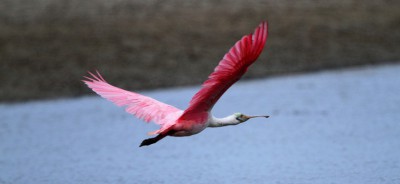
These birds are not supposed to be here. They are in Florida, a few Gulf Coast states and Central and South America. I slowly and casually opened my backpack and prepared my camera with a long lens and monopod while managing to hold myself back from racing through the marsh screaming, “Look at the spoonbill!”
A check with the binoculars revealed a three-foot-tall, almost cartoonlike caricature of a bird with a long flat bill that looks like, well, a large wooden spoon. Its pale green head is as bald as Bozo the Clown with obvious ear openings protected with tufts of downy feathers and piercing blood-red eyes. The body looks like a fluffy ball of pink cotton candy standing on long, rose-colored legs. Their roseate coloration is the result of an organic pigment that is found in algae that their prey consumes. The juvenile birds are born with a head of white feathers that will eventually recede into the baldpate.
The spoonbill casually strolled down the empty tidal creek and out onto a mud flat covered with about half a foot of water. It began sweeping its long bill back and forth through the water. This sweeping method of feeding is used when the water is cloudy or at night when the bird cannot see the prey. The bill would remain partially open in an effort to feel prey with sensitive nerve endings located on the bill. When prey such as crabs, fish or shrimp come in contact with the bill, it will automatically snap shut capturing the food. With a sharp jerk of the head the prey is thrown into the back of the throat. The nostrils are located high up on the bill allowing the bird to easily breathe while probing deep into the water.
As it fed, a low grunting sound could be heard from time to time. We followed the bird as it flew short distances to other productive feeding areas. Here, in the shallow “fish bowls” the spoonbill could easily see the crabs and would just grab or peck with its large bill devouring the meal.
North Carolina is as far north as this species of spoonbill will venture. They have been spotted at Pea Island National Wildlife Refuge on the northern Outer Banks, at Twin Lakes in Sunset Beach and out on Ocean Isle Beach, and they have even been sighted at Riverbend Park in Catawaba County near Statesville, N.C. They can be found in fresh as well as salt water marshes and are the only spoonbill species (out of six) found in the Northern Hemisphere. Although this spoonbill was a loner, they are quite social and often found in groups, and they will mix in with other wading birds. A large group of spoonbills is referred to as a bowl.
During the 1800s, the roseate spoonbill was almost wiped out along with many other long-legged wading birds that were slaughtered for their plumage to adorn hats. The spoonbill feathers were specifically used in the making of hand fans and privacy screens. Conservation laws soon protected the birds and they have made a remarkable comeback. Today, even though their numbers are somewhat stable, they are threatened by the loss of feeding and breeding habitat.
Returning to Bear Island two days later, I searched for a few hours and was unsuccessful in locating the spoonbill. I walked out of the marsh, through the dune fields and out onto the low tide beach. As I hiked back to the dock I saw linear etchings in the sand. I ran my hand along the sand and came into contact with a hard object gliding partially submerged through the sand. Impatient for the return of the incoming tide, lettered olive gastropod mollusks were busting out of the hard-packed low tide sand and heading back towards the ocean and the soft, loose sand moistened by the incoming waves.
The enjoyment of a rare spoonbill sighting on Bear Island will last with me for a long time, but seeing these lettered olives fight their way back to the ocean was also an experience that I will not soon forget. If we just take the time to get out and explore nature, we will discover and experience that the normal existence of wildlife can be quite extraordinary.




